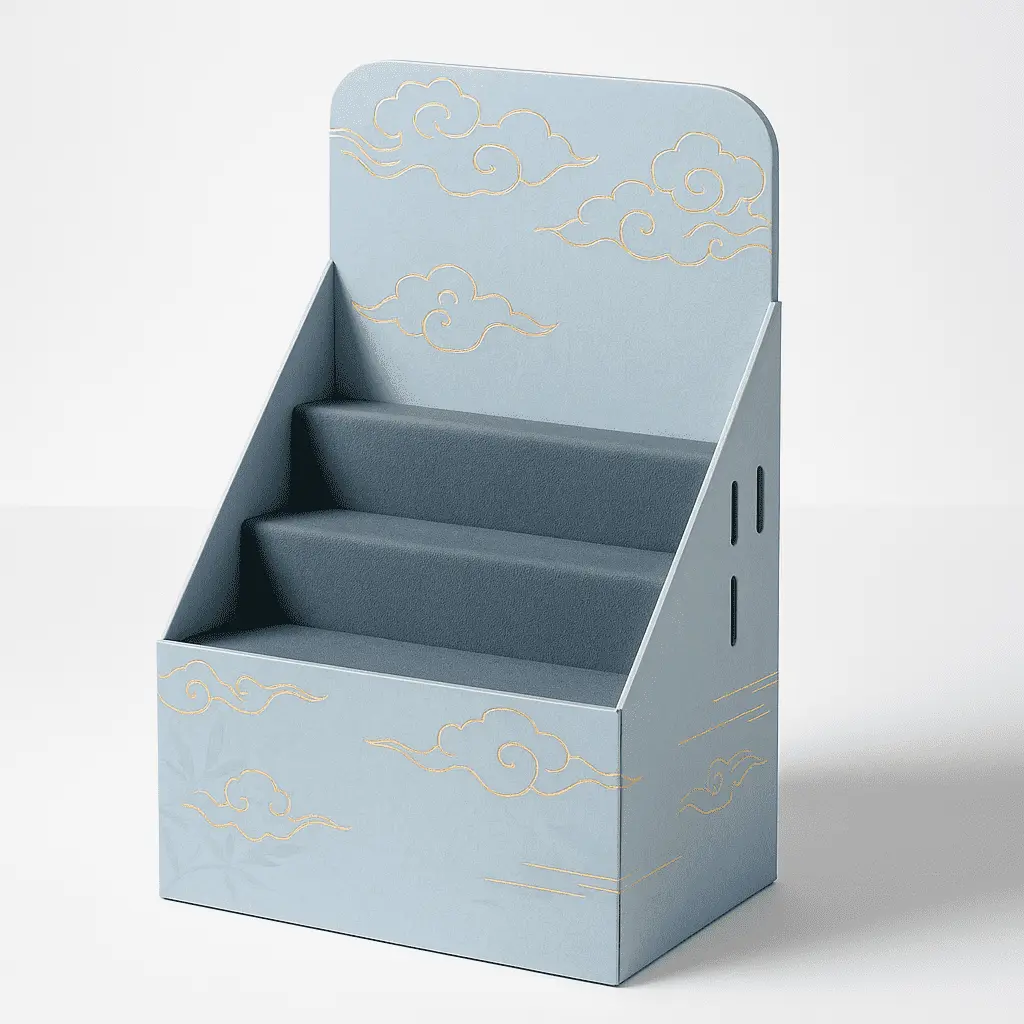Understanding the Fundamentals of Effective POS Display Design
The Psychology Behind Consumer Behavior in Retail Environments
Grasping the intricacies of consumer psychology is paramount when designing POS displays that truly resonate with shoppers. Retail environments are bustling hubs of activity, and understanding how consumers navigate these spaces can significantly impact the effectiveness of your displays. Consider the concept of "decision fatigue" - as shoppers progress through a store, their ability to make decisions diminishes. This phenomenon underscores the importance of creating displays that are not only visually appealing but also easy to comprehend at a glance.
Moreover, the principle of "social proof" plays a crucial role in influencing purchasing decisions. Displays that showcase popular or trending items can tap into this psychological trigger, encouraging shoppers to follow the perceived choices of others. By incorporating elements that suggest widespread approval or popularity, such as "bestseller" tags or customer testimonials, you can leverage this aspect of consumer behavior to boost the appeal of your POS displays.
Key Design Elements That Capture Attention and Drive Sales
The visual components of your POS display are the first line of engagement with potential customers. Incorporating bold, contrasting colors can create a visual hierarchy that guides the shopper's eye to key products or messages. However, it's crucial to strike a balance - overly garish or clashing colors can be off-putting and detract from the overall effectiveness of the display.
Typography plays a pivotal role in conveying your message quickly and effectively. Opt for clear, legible fonts that align with your brand identity while ensuring readability from a distance. The strategic use of negative space, or "white space," can prevent your display from appearing cluttered and overwhelming, allowing key elements to stand out.
Interactive elements can significantly enhance engagement with your POS display. Consider incorporating touchscreens, QR codes, or even simple mechanical interactions that invite shoppers to engage with the display physically. This tactile involvement can create a memorable experience and increase the likelihood of a purchase.
The Role of Brand Consistency in POS Display Effectiveness
While creativity in design is essential, maintaining brand consistency across your POS displays is equally crucial. Your displays should serve as an extension of your overall brand identity, reinforcing brand recognition and trust among consumers. This consistency extends beyond just visual elements like logos and color schemes - it should encompass the tone of your messaging and the overall feel of the display.
Consider developing a set of brand guidelines specific to your POS displays. This document can outline approved colors, fonts, imagery styles, and messaging tones, ensuring that all your displays, regardless of location or season, present a unified brand image. This consistency not only strengthens brand recall but also contributes to a sense of reliability and professionalism that can influence purchasing decisions.
Maximizing ROI Through Strategic Placement and Product Showcasing
Optimal Locations for POS Displays in Various Retail Settings
The strategic placement of POS displays within a retail environment can significantly impact their effectiveness and, consequently, your ROI. High-traffic areas, such as near entrances, checkout counters, and main aisles, are prime locations for capturing shopper attention. However, it's crucial to consider the specific layout and flow of each unique retail space.
End-cap displays, positioned at the end of aisles, can be particularly effective as they catch the eye of shoppers as they navigate through the store. For impulse purchase items, placing displays near checkout areas can capitalize on last-minute buying decisions. In larger retail spaces, consider creating "zones" or "shop-in-shop" concepts with your POS displays, creating immersive brand experiences that can significantly boost engagement and sales.
Techniques for Effective Product Showcasing and Arrangement
The way products are arranged and showcased within your POS display can dramatically influence their appeal and sellability. Utilize the principle of "eye-level is buy-level" by placing your most profitable or popular items at eye height for the average shopper. This prime real estate should be reserved for products you most want to promote.
Consider implementing a storytelling approach in your product arrangement. Group complementary items together to suggest usage scenarios or complete solutions, encouraging multiple purchases. For instance, a display for a new smartphone could include cases, screen protectors, and charging accessories arranged in a way that tells a story of the complete user experience.
Rotation of products within your display is also crucial. Regularly updating and rearranging items can maintain a sense of novelty and encourage repeat customers to explore your offerings anew. This practice can also help you identify which products perform best in different display positions, allowing for data-driven optimization of your product showcasing strategy.
Leveraging Technology to Enhance POS Display Performance
In the modern retail landscape, technology can play a pivotal role in elevating the effectiveness of POS displays. Digital screens can be incorporated to showcase product features, demonstrate usage, or display dynamic content that can be updated remotely. This flexibility allows for real-time adjustments to messaging or promotions based on factors like time of day, current events, or inventory levels.
Augmented Reality (AR) technology presents exciting possibilities for POS displays. By incorporating AR elements, shoppers can use their smartphones to interact with your display in unique ways, such as virtually trying on products or seeing them in different colors or configurations. This level of engagement not only captures attention but also provides valuable information that can drive purchase decisions.
Data analytics can also be leveraged to optimize your POS display strategy. By implementing sensors or cameras (with appropriate privacy considerations), you can gather insights on shopper behavior, such as dwell time, interaction patterns, and conversion rates. This data can inform iterative improvements to your display design and placement, continuously refining your approach to maximize ROI.
Measuring and Optimizing POS Display Performance for Continuous Improvement
Key Performance Indicators (KPIs) for Assessing POS Display Effectiveness
To truly maximize the ROI of your POS displays, it's essential to establish a robust framework for measuring their performance. Key Performance Indicators (KPIs) provide quantifiable metrics that allow you to assess the effectiveness of your displays and make data-driven decisions for improvement. Some crucial KPIs to consider include:
- Conversion Rate: The percentage of shoppers who interact with the display and make a purchase.
- Average Transaction Value: The average amount spent by customers who engage with the display.
- Dwell Time: The average time shoppers spend interacting with or observing the display.
- Lift in Sales: The increase in sales of featured products compared to baseline or control periods.
- Return on Investment (ROI): The financial return generated by the display relative to its cost.
It's important to note that the relevance of specific KPIs may vary depending on your product type, retail environment, and overall marketing objectives. Tailor your KPI selection to align with your specific goals and the unique characteristics of your retail context.
Implementing A/B Testing for Continuous Optimization
A/B testing, also known as split testing, is a powerful method for refining and optimizing your POS display strategy. This approach involves creating two versions of a display with a single variable changed, then comparing their performance to determine which is more effective. Variables to test might include:
- Display location within the store
- Color schemes or design elements
- Product arrangement or grouping
- Promotional messaging or call-to-action phrasing
- Pricing strategies or discount offerings
When conducting A/B tests, it's crucial to isolate variables and maintain consistent testing conditions to ensure the validity of your results. Run tests for a sufficient duration to account for variations in shopper behavior across different days or times. Analyze the results using your established KPIs to make informed decisions about which elements to implement or refine in future displays.
Leveraging Customer Feedback for Iterative Improvements
While quantitative data is invaluable, qualitative insights from customer feedback can provide nuanced understanding and inspiration for improvements. Implement strategies to gather customer opinions and experiences related to your POS displays. This could include:
- Brief surveys or feedback kiosks near the display
- Training staff to engage customers and gather informal feedback
- Monitoring social media mentions or hashtags related to your in-store experiences
- Conducting focus groups or in-depth interviews with loyal customers
Customer feedback can reveal unexpected insights about the appeal, functionality, or shortcomings of your displays. Pay particular attention to recurring themes or suggestions, as these may indicate significant opportunities for enhancement. Remember to close the feedback loop by implementing changes based on customer input and communicating these improvements to show that you value their opinions.
By combining quantitative KPI analysis, strategic A/B testing, and qualitative customer feedback, you can create a comprehensive optimization strategy that continually refines your POS displays. This iterative approach ensures that your displays remain effective, relevant, and aligned with evolving customer preferences and behaviors, ultimately maximizing your ROI in the dynamic retail environment.
Conclusion
Designing POS displays that maximize ROI in retail stores is a multifaceted endeavor that requires a deep understanding of consumer behavior, creative design principles, and strategic implementation. By focusing on effective placement, engaging design elements, and leveraging technology, retailers can create displays that not only capture attention but also drive sales. The key to long-term success lies in continuous measurement and optimization, using data-driven insights to refine your approach. Remember, the most effective POS displays are those that evolve with changing consumer preferences and retail trends, always staying one step ahead in the competitive retail landscape.
Contact Us
Ready to revolutionize your retail space with custom-designed POS displays that drive results? At Guangzhou Huadu Fetching Color Printing and Packaging Co., Ltd., we specialize in creating innovative, high-quality packaging solutions tailored to your unique needs. Let our team of expert designers and engineers help you maximize your ROI with POS displays that truly stand out. Contact us today at support@fetchingprinting.com to discuss how we can elevate your in-store marketing strategy and boost your bottom line.





